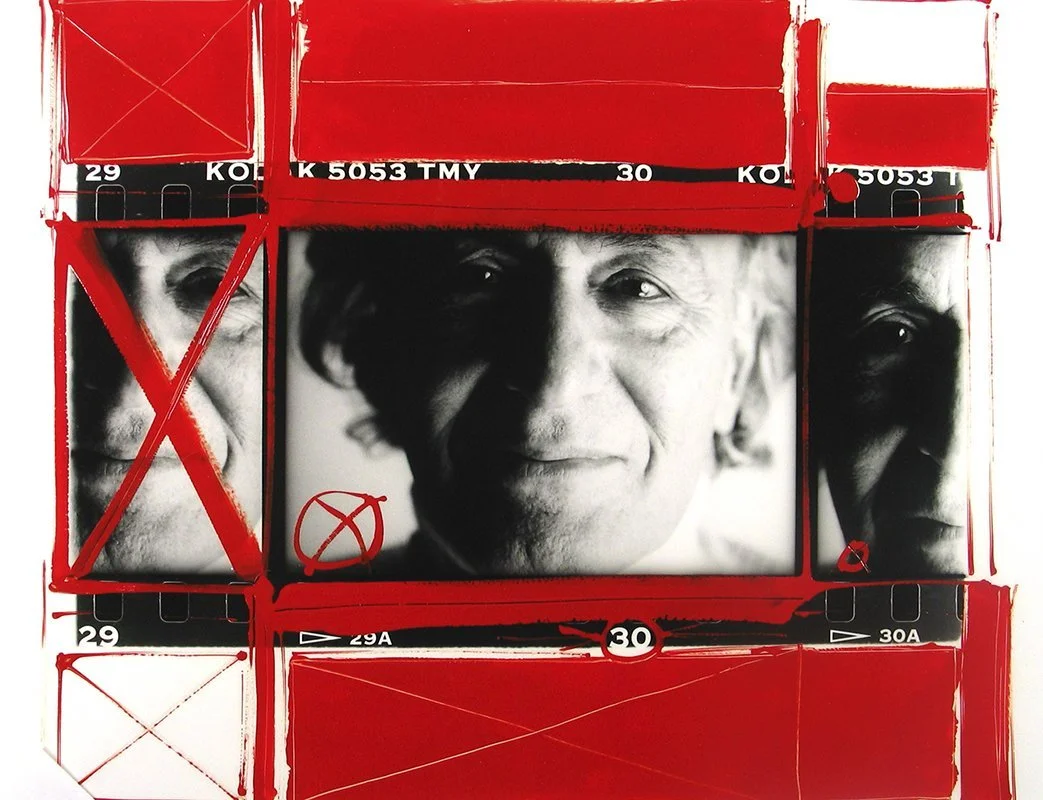IMPACT | William Klein: Clarity in Chaos
© William Klein. With special thanks to William Klein studio assistants, Pierre-Louis Denis and Tiffanie Pascal.
By Kala Herh
It is often said that history favors the rule-breakers. This couldn’t be truer for photographer William Klein, who now 90, has been coloring outside the lines his whole career. Throughout his sixty years working in the industry, he never succumbed to the norm. He never strove to appease people. He never gave a damn about conventional composition techniques. Instead, he relied on something greater: his own instincts.
© William Klein. With special thanks to William Klein studio assistants, Pierre-Louis Denis and Tiffanie Pascal.
The work of the Harlem-born-and-raised artist aims to illustrate what cannot be directly observed, emphasizing the evocation of a certain sensation, rather than objective perfection. With photos like Gun 1 and Club Allegro, his ability to marry harmony and chaos defined his unusual aesthetic. The ingenuity of Klein’s photography lies, not in his ability to portray an objective representation of the world that we see, but rather, in a skewed reality that is produced by the camera. The reality that is presented in his photographs did not exist until it was passed through the control of the camera’s settings. Klein has an unconventional style: courting graininess, which highlights the grittiness of the environment he inhabits; selectively blurring the focus, which treats the subject matter as if it was taken for tabloids; and turning up the contrast, which in turn produces a dynamic and visceral effect. In offbeat chaos, he finds clarity.
© William Klein. With special thanks to William Klein studio assistants, Pierre-Louis Denis and Tiffanie Pascal.
© William Klein. With special thanks to William Klein studio assistants, Pierre-Louis Denis and Tiffanie Pascal.
Unlike some of his contemporaries, Klein had no formal training in the industry — perhaps, for this exact reason did he become a pioneer of such radical photographic techniques. Instead of being stilted by professional training and studying, then 18-year old Klein served in the U.S. Army, stationed in both Germany and France, during World War II. During the war, he drew cartoons for the military newspaper, worked as a radio operator, and played poker — which ultimately granted him his first interaction with photography. The spoils of a poker match yielded Klein a Rolleiflex camera. Due to a diplomatic agreement between France and the United States, Klein and other soldiers were allowed to stay and study in Europe. He moved to study at Sorbonne, Paris, where Klein found a job with painter Fernand Léger. Klein still recounts Léger’s advice that changed the trajectory of his career: “You guys are all obsessed with collectors and museums and galleries, but all that’s bullshit… Get out of the galleries. Look at the buildings; go out onto the street.”
© William Klein. With special thanks to William Klein studio assistants, Pierre-Louis Denis and Tiffanie Pascal.
And get out he did. Fascinated by photography’s fluid nature that no other medium provided, Klein ventured into the abstract photography scene. His experiments with photography were nothing short of explosive; he threw everything from cyanide to White-Out to milk on his prints with controlled abandonment (or what seemed like it). His abnormal, yet highly charged work caught the eye of Vogue’s art director, Alexander Lieberman, who saw the potential vis-à-vis fashion photography, later inviting him to work for the magazine in New York.
© William Klein. With special thanks to William Klein studio assistants, Pierre-Louis Denis and Tiffanie Pascal.
In an age where the pages of Vogue and other publications produced a glossed-over interpretation of society (with their size-zero models donned in furs and hyper-glamorized Winston cigarette ads), it’s easy to understand why Klein was initially apprehensive to enter the fashion industry. Still, he remains one of the pioneers that moved fashion photography in a whole new direction — one that steered away from staged studio photoshoots and veered onto the street. Populated mainly by the Silent Generation and characterized by virgin brides and organization men, the ‘50s posed a series of conformities that were yearning to be redefined.
For more of this interview, check out the feature in our previous issue entitled “IMPACT” here.













